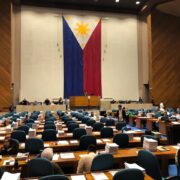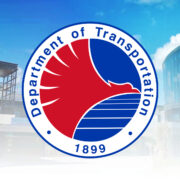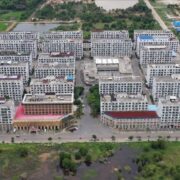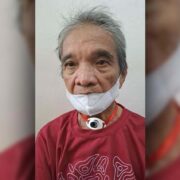PH tourism at gunpoint

Tourism thrives on image, and regrettably, the image of the Philippines now projected abroad is not of white sand beaches and warm, friendly people but of tourists mugged in broad daylight or gunned down in cold blood in the streets of Metro Manila.
The lesson for the Department of Tourism (DOT) is that advertising can only do so much. Warranted or not, no amount of marketing can trump the fear of falling victim to crooks or hired guns carrying out their mission with chilling ease in the nation’s capital.
Based on police accounts, a masked man fatally shot two unnamed Japanese nationals on Malvar Street in Manila’s red-light district of Malate at about 10:40 p.m. in Aug. 15. The victims, aged 41 and 53, were alighting from a taxi when they were approached by the assailant, who was accompanied by another man on a motorcycle nearby. Two suspects were arrested three days later and charged with murder, while a third was still being pursued, the Manila Police District (MPD) said in a statement.
Japanese mastermind
Investigators learned that a Japanese national who went by “Boss” had offered the Filipino suspects P9 million to kill his two compatriots, according to MPD spokesperson Maj. Philipp Ines. Conveniently, the identities of the third assailant and the suspected Japanese mastermind weren’t disclosed or remain unknown.
One might be skeptical of the police’s claim, but even if true, the foreigner’s alleged involvement is beside the point. It doesn’t erase the fact that it happened here. Nor does it erase how brazenly the perpetrators committed the crime, as though swaggering with the confidence that they could escape justice at any time.
Meanwhile, the pair of Japanese tourists weren’t the only victims. In May, two South Koreans were held at gunpoint and robbed of their luxury bags in Taguig’s polished, cosmopolitan enclave of BGC, or Bonifacio Global City.
The South Korean government expressed alarm, noting that such attacks were happening “frequently in Metro Manila… without regard for time or place,” according to a post on the website of the country’s Ministry of Foreign Affairs Overseas Travel Safety.
If even BGC, long regarded as one of Metro Manila’s few crime-free bubbles, is no longer safe, then where can tourists stay there?
Dramatic rebound
Such erosion of public safety in the National Capital Region—or even the appearance of it—could not have come at a worse time. Tourism Secretary Christina Frasco has trumpeted the travel industry’s dramatic rebound, reporting that in January alone, revenues hit P65.3 billion, a figure that surpassed pre-pandemic levels and signaled how tourism had become a crucial pillar of economic stability and growth.
The Philippines welcomed more than 2.9 million international visitors in the first half of the year. Over the years, South Korea, the United States, and Japan have accounted for the top arrivals, with each tourist representing food on the table for families dependent on jobs in hotels, restaurants, transport, and local crafts.
But the country lags far behind its neighbors like Thailand, Malaysia, and Vietnam. The DOT has itself admitted it is fighting a regional battle for tourist attention with “nothing but a plastic bullet,” its branding budget slashed to a fraction of what its rivals spend. What meager resources remain for marketing are now undermined by the very thing no ad campaign can fix: the perception that visitors can never feel truly safe in the Philippines.
The authorities, however, will try to tell a different story. In May, the National Capital Region Police Office congratulated itself for a 23-percent drop in focus crimes, or serious offenses like murder, rape and robbery, over the past six months.
Third-rate law enforcement
The NCRPO said it recorded 779 fewer incidents of focus crimes from Nov. 23, 2024 to May 23, 2025 compared to the same period last year.
Yet such gains are bound to be overshadowed by reports of tourists being preyed on by criminals in the capital, where police presence is supposedly highest. How will travelers take notice of the country’s world-class destinations when the first thing they hear about it is its third-rate law enforcement?
Last Saturday was the 15th anniversary of the 2010 Manila hostage crisis, which claimed the lives of eight Hong Kong tourists and the policeman hostage-taker. The memory of that incident may have faded but the lawlessness that gave rise to it has not. In this environment, no branding campaign or tourism slogan will work. For tourism to remain a robust driver of economic growth, the Marcos administration must grasp the obvious: Safety is the first and most indispensable form of advertising.
Unless the government can guarantee that visitors will be able to roam the streets without fear of being mugged or ending up in the morgue, the catchphrase “Love the Philippines” will always sound like sarcasm to local and foreign ears.

















